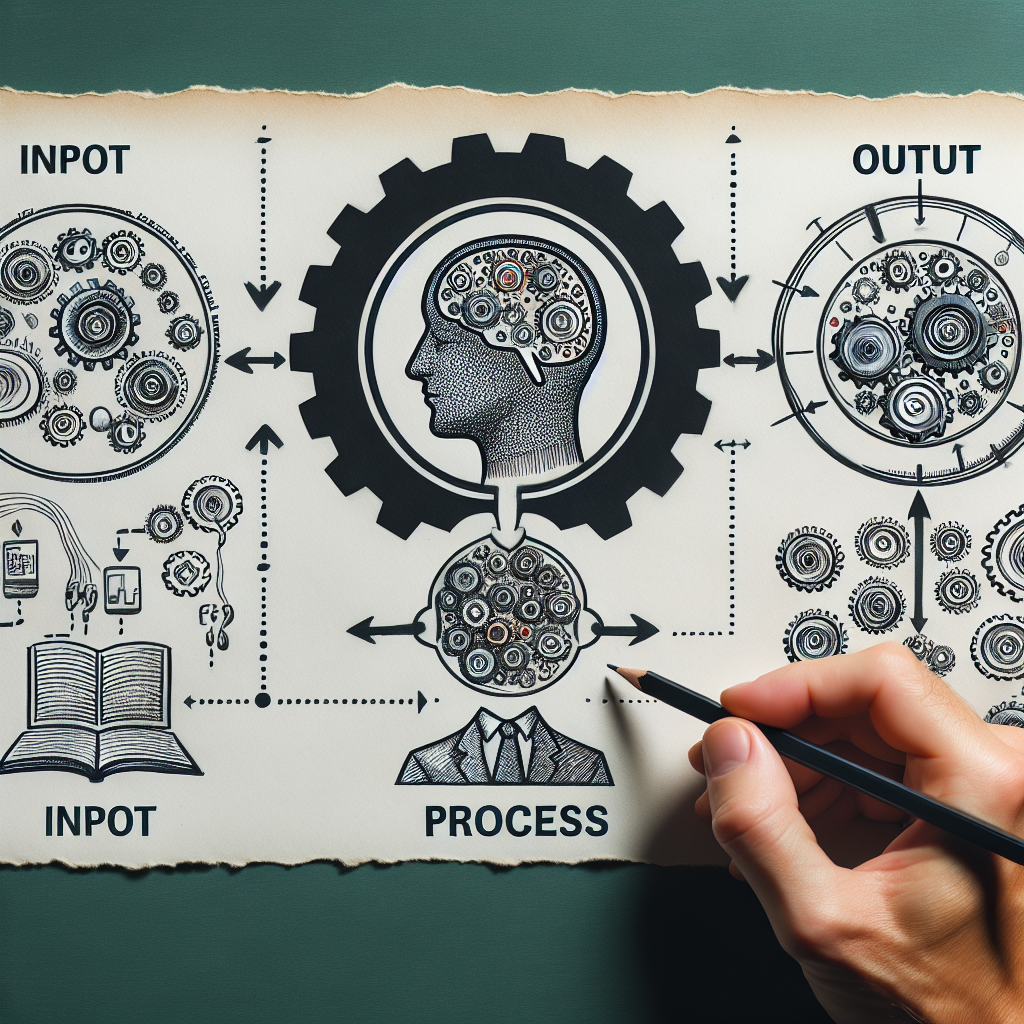Introduction
In our increasingly information-rich world, understanding how we process information is more essential than ever. The journey from input to output can be complex, weaving through various steps that define our cognitive experiences. Whether you’re a student eager to enhance your learning techniques or a professional aiming to refine your skills in decision-making, grasping the Information Processing Model can unlock new potential in how you absorb, analyze, and apply information. In this comprehensive article, we will delve into detailed steps, real-world applications, and actionable insights, guiding you on an engaging journey through the intricacies of the Information Processing Model.
The Information Processing Model: An Overview
At its core, the Information Processing Model provides a framework for understanding how we receive and interpret information. This model, often compared to computer operations, consists of several distinct stages:
- Input: This is where information is received through our senses.
- Processing: The mind analyzes and interprets this information.
- Storage: Information is then stored for future retrieval.
- Output: Finally, we apply the information as needed.
By viewing these stages holistically, we can develop strategies to optimize our processing, making the journey from input to output more efficient and impactful.
Stage 1: Input
The Power of Sensory Input
The first step in the Information Processing Model is sensory input. This part often gets overlooked, yet it’s crucial to understand that our brains are bombarded with more stimuli than we can process at any moment. Visuals, sounds, tactile sensations, and even scents form the basis of our input.
Case Study: Enhancing Classroom Learning
Consider a classroom setting. Research shows that students who engage multiple senses during learning—through visuals, hands-on activities, and auditory instructions—typically perform better. The findings suggest that teachers who employ sensory-rich teaching methods significantly enhance their students’ capacity to retain new information.
Stage 2: Processing
Interpreting the Input
Once we receive sensory information, the next stage is processing. Here, our brains categorize and interpret the data. Depending on the complexity of the information, different cognitive strategies may be employed:
- Attention: Focusing on relevant details while filtering out distractions.
- Encoding: Transforming the raw data into a form that can be stored.
- Cognitive Load Management: Balancing the mental demand of processing multiple information streams.
Enhancing Processing: A Practical Approach
To optimize this stage, the use of mnemonic devices, mind mapping, and active engagement techniques, like questioning, can lead to improved understanding and retention.
| Technique | Description | Impact on Processing |
|---|---|---|
| Mnemonic Devices | Memory aids that simplify complex information | Streamlines encoding |
| Mind Mapping | Visual representation of concepts and relationships | Enhances recall and comprehension |
| Active Engagement | Interactive learning techniques | Promotes deeper understanding |
Stage 3: Storage
The Mechanics of Memory
Storage is where processed information is kept for future use. Memory can be categorized into short-term (or working memory) and long-term storage.
- Short-Term Memory: Temporary retention of information.
- Long-Term Memory: Information that is consolidated for lasting recall.
Case Study: The Role of Sleep in Memory Consolidation
Research findings elucidate a fascinating insight: adequate sleep significantly enhances the process of memory consolidation. A study found that participants who had a full night’s sleep after learning new tasks could recall the information better than those who stayed awake, emphasizing the importance of sleep in the context of the Information Processing Model.
Stage 4: Output
Applying Processed Information
The final step in the Information Processing Model is output, where we apply the information we have processed. This can take various forms:
- Verbal (Speaking or Writing)
- Motor (Physical Action)
- Emotional (Feelings in Response)
Case Study: Decision-Making in Business
In business, decision-making can often hinge on effectively processing input before reaching an output. A corporation that employs data-driven decision-making showcases the importance of analyzing trends and synthesizing the information before acting. Their output—in the form of strategic sales initiatives—demonstrates the value of the Information Processing Model in achieving successful business outcomes.
Conclusion: Transforming the Process
Understanding the pathway from input to output through the Information Processing Model empowers individuals to optimize their cognitive processes. By refining each stage, from sensory input to final output, you can enhance your learning abilities, decision-making skills, and overall effectiveness in both professional and personal settings.
Don’t just consume information—actively engage with it, visualize it, and reach out for feedback. The more you practice these techniques, the more intuitive the process becomes, leading you to effortlessly transform input to meaningful output.
FAQs
1. What is the Information Processing Model?
The Information Processing Model describes how we receive, process, store, and output information, often likened to how computers operate.
2. How can I improve my processing stage?
Techniques such as using mnemonic devices, mind mapping, and engaging in active learning can significantly enhance your information processing.
3. Why is storage important in learning?
Storage is crucial because it determines how well we retain information for future use. Effective storage strategies improve long-term recall.
4. How does sleep affect memory?
Adequate sleep aids in the consolidation of memories, allowing for better recall and understanding of information we have learned.
5. Can I apply the Information Processing Model in daily life?
Absolutely! Whether planning your day, learning a new skill, or making decisions, applying the model can improve how you process and act on information.
By familiarizing yourself with how you process information, you’ve already taken the first step towards enhancing your cognitive abilities. With each venture from input to output, you’re weaving a richer tapestry of understanding, influencing how you learn and adapt in every aspect of your life.

